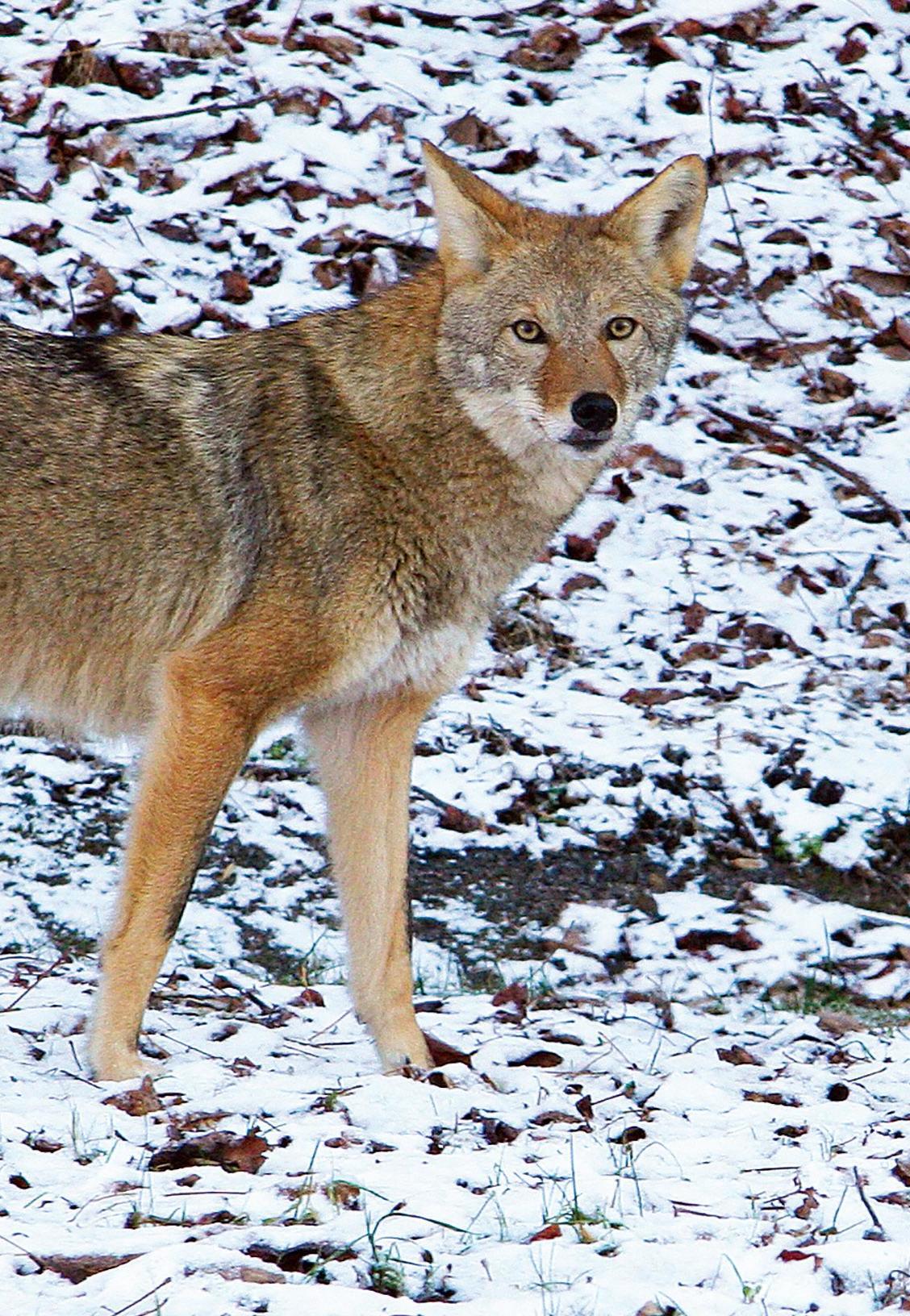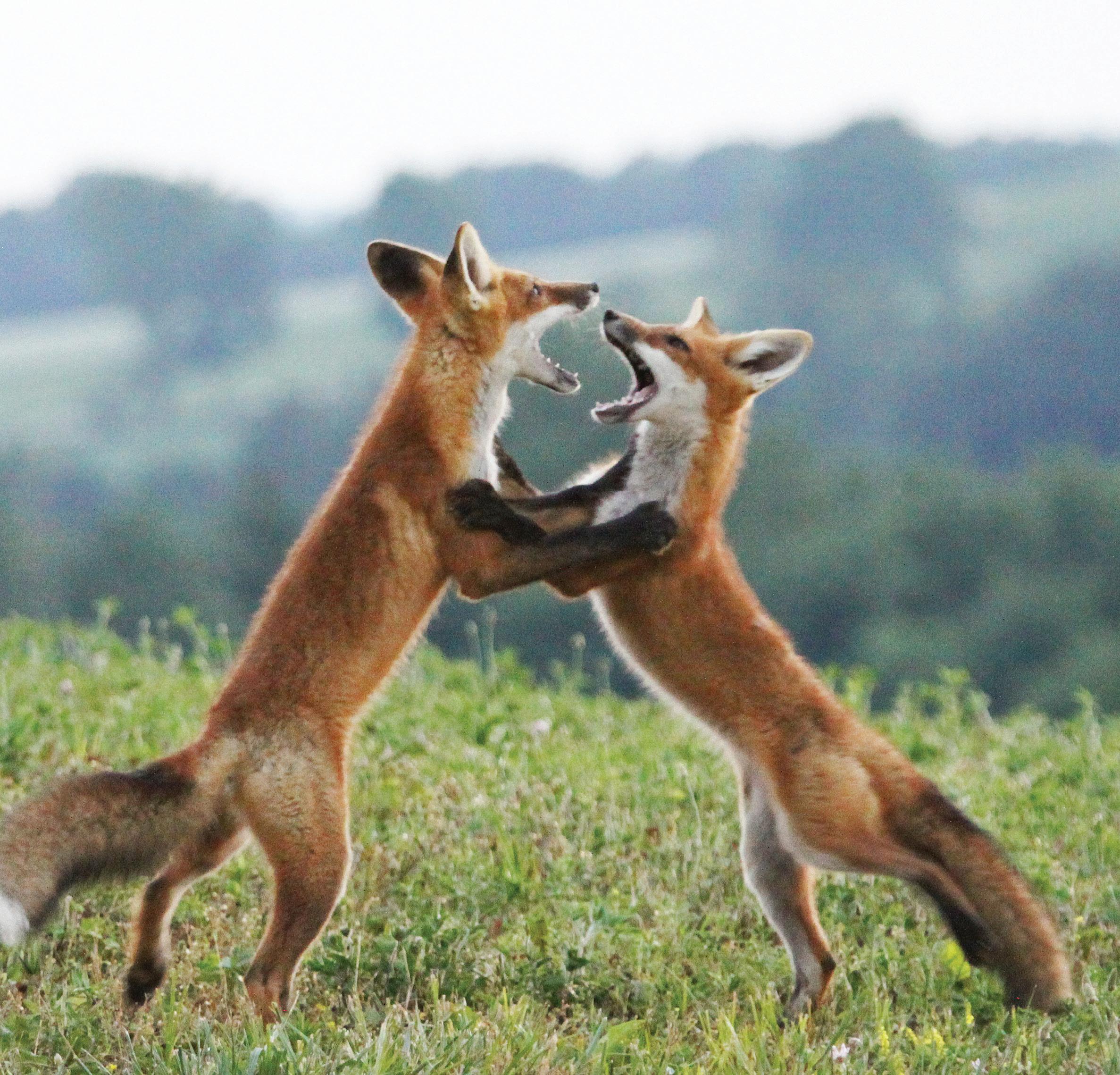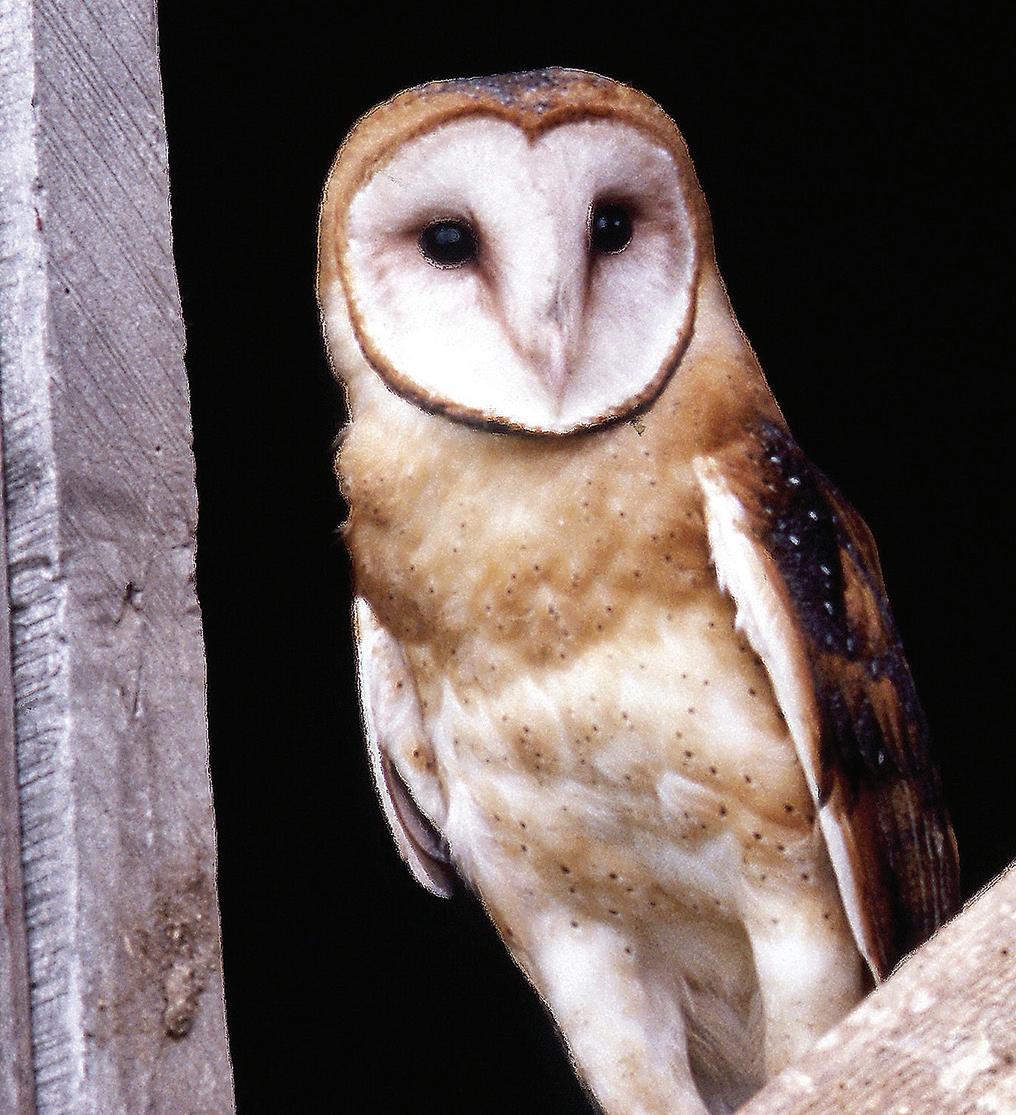
6 minute read
WOODS, WATERS, AND WILDLIFE
Red fox, gray fox, and wily coyote
They may seem similar, but each competes differently as a top-tier predator.
STORY AND PHOTOS BY W.H. “CHIP” GROSS
Coyotes have been muscling in on the habitats of both red and gray foxes since the last half-century and are now in all 88 counties in Ohio. When wild animals face a change in their environment, they have three options: adapt, migrate, or die. When those animals happen to be three top-tier predators attempting to occupy the same habitat, things can get dicey.

Red and gray foxes have been living alongside one another in what today is the Buckeye State for hundreds of years. Issues started, however, during the last half-century, when eastern coyotes arrived and quickly filled all 88 counties. According to Katie Dennison, furbearer biologist for the Ohio Division of Wildlife, an annual survey indicates “a long-term declining trend in red fox and gray fox sightings since the survey began in 1990, which is indicative of a decline in both fox populations in Ohio. However, the trend does appear to have leveled off during the past five to seven years.” Dennison adds that the survey relies on deer-bowhunter observations, so “is biased toward describing fox population trends in rural areas.” The severe drop in fox numbers is no doubt due, at least in part, to competition by coyotes. As a result, are foxes — especially red foxes — now denning closer to human habitation to avoid coyotes, which are more sensitive to human activity?
The evidence, thus far, is mainly anecdotal, but Dennison knows of at least one recent scientific study in the Buckeye State, conducted on Cleveland Metroparks properties, that has looked at the possibility. “There has been some research in Ohio that has looked into habitat partitioning between red fox and coyote, and it does indeed find support for red fox possibly finding ‘refuge’ from coyotes by using more highly developed areas.”
Gray foxes are behaviorally more similar to cats than to dogs and can even climb trees. I have had red foxes denning near my rural home in north-central Ohio for the past several years and know other people who have, as well. My fox family maintains multiple den sites within sight of my house — three that I know of — which my wife and I keep tabs on with binoculars and a trail camera. The dens are spaced about 200 yards apart and are a similar distance from the house. The mother fox, known as a vixen, occasionally moves her young from den to den, which is not unusual for red foxes. Her mate, known as the dog fox, helps by bringing food to the den for the female and kits.
As they grow, the young foxes are a hoot to watch. Doing what puppies everywhere do, they spend their days chasing, pouncing, and wrestling with one another — developing muscles and hunting skills they’ll need when they eventually leave the den to strike out on their own. By the way, if you’ve never heard a fox bark, it’s worth doing an online search to hear. A loud, otherworldly sound, it literally makes the hair on the back of your neck stand up, especially when emanating from dark woods at night. It’s as if space aliens, Bigfoot, or both have finally found you and are closing in.
Before the arrival of coyotes in Ohio, how did red and gray foxes coexist in the same areas? Behaviorally, gray foxes are more catlike — they can even climb trees for a few feet — whereas red foxes are more doglike. As a result, the two fox species can occupy the same general habitat but primarily use different parts of it, known as niches. For instance, gray foxes prefer mainly dense, brushy areas, while red foxes prefer more open, developed country. Coyotes, on the other hand, will use either habitat — and that, as they say, is the rub. Being nearly twice the size and weight of both fox species, coyotes have essentially become the “big bullies” in the neighborhood, and they are not looking to leave town anytime soon.
While nature may seem serene to us as humans, it is anything but — and constantly changing. In reality, life in the wild is a daily struggle for animals to defend territory, find food, and raise young. In short: adapt, migrate, or die.
Young red foxes are a blast to watch — playing much the same way that puppies do.

Ask chip!
Email Chip Gross with your outdoors questions at whchipgross@ gmail.com. Be sure to include “Ask Chip” in the subject of the email. Your question may be answered on www.ohiocoopliving.com!
give a hoot

Wintering-owl study needs your help.
STORY AND PHOTOS BY W.H. “CHIP” GROSS
Nocturnal, secretive, and steeped in folklore, owls are cryptic wild critters that give up the details of their lives only grudgingly. Blake Mathys, a member of Marysville-based Union Rural Electric Cooperative, hopes to shine a little light on the subject this winter.
Mathys, an associate professor of environmental science at Ohio Dominican University, has started the Central Ohio Owl Project (COOP) to better document wintering owls in Ohio — especially rarer species like barn owls, long-eared owls, and northern saw-whet owls.
“My main reason for developing the project is that, for a number of reasons, owl sightings often don’t get reported, even by citizen-scientists and serious birders,” Mathys says. “I want to provide a secure outlet to get a better idea of the true numbers of owls in our state during the winter months.”

Saw-whet owl
What Mathys is requesting is that anyone spotting an owl this winter — anywhere, of any species, on private or public land — report the sighting to him online at www. ohiodominican.edu/owlproject, where there’s a form that asks users where they saw the owl, the species (if known), plus a few other basic questions.
“If you can get close enough to take a photograph of the owl, that would be helpful for positive identification,” Mathys says. “Your owl sighting might even be eligible for a small cash reward.”
Mathys also stresses that the locations provided will be kept strictly confidential and the information used only for research purposes. All three of the study’s main owl species are either threatened in Ohio (barn owl) or a species of special concern (long-eared owl and northern saw-whet owl), so information about their wintering habits, habitats, and numbers could prove helpful in their conservation.
Look for barn owls in or near structures, such as old barns, silos, and sheds. Long-eared owls and northern saw-whet owls are found roosting primarily in evergreen trees during winter.
“Owls have always been one of my favorite groups of birds, and for a long time I’ve been convinced that there are many more owls around than people realize,” Mathys says. “I would very much appreciate the assistance of any fellow electric co-op members who would like to participate in the study.”




